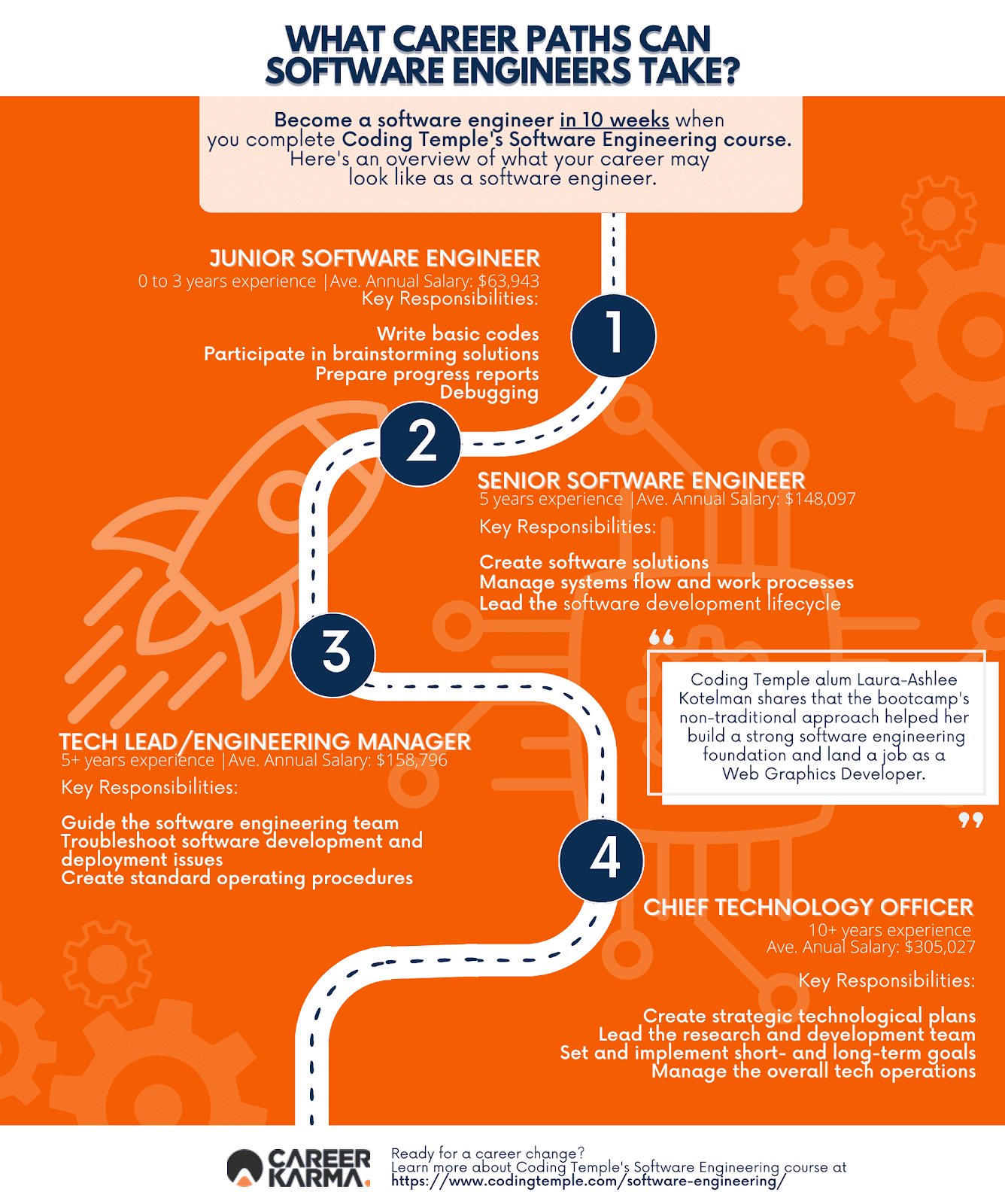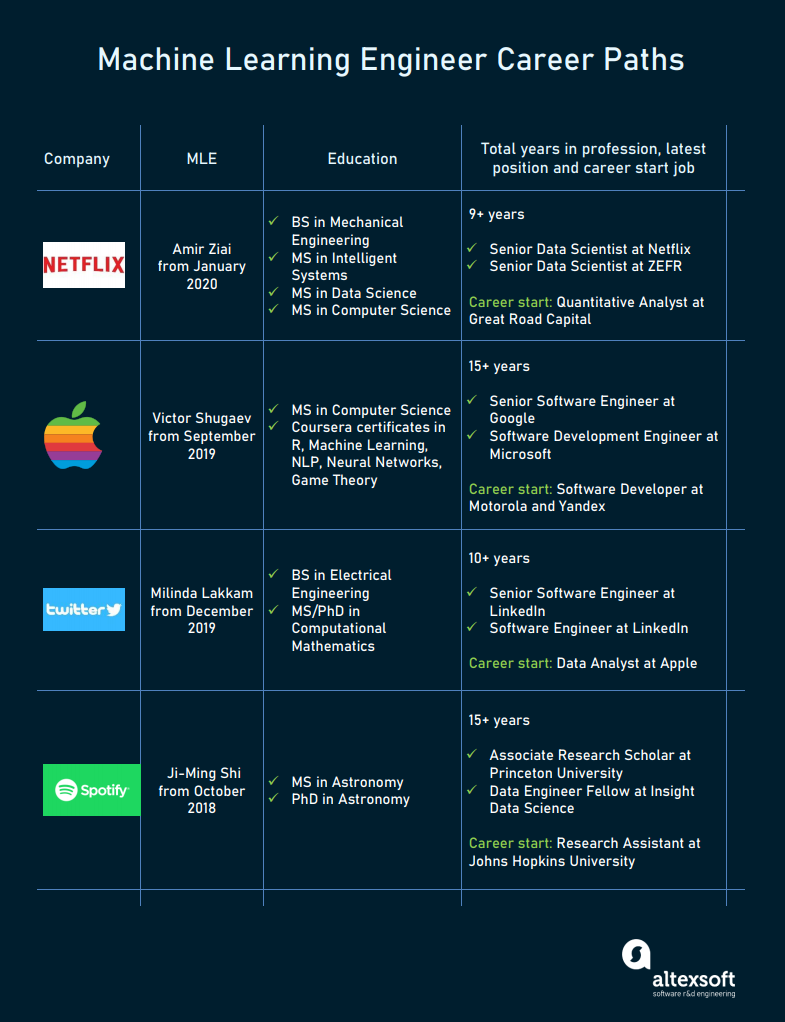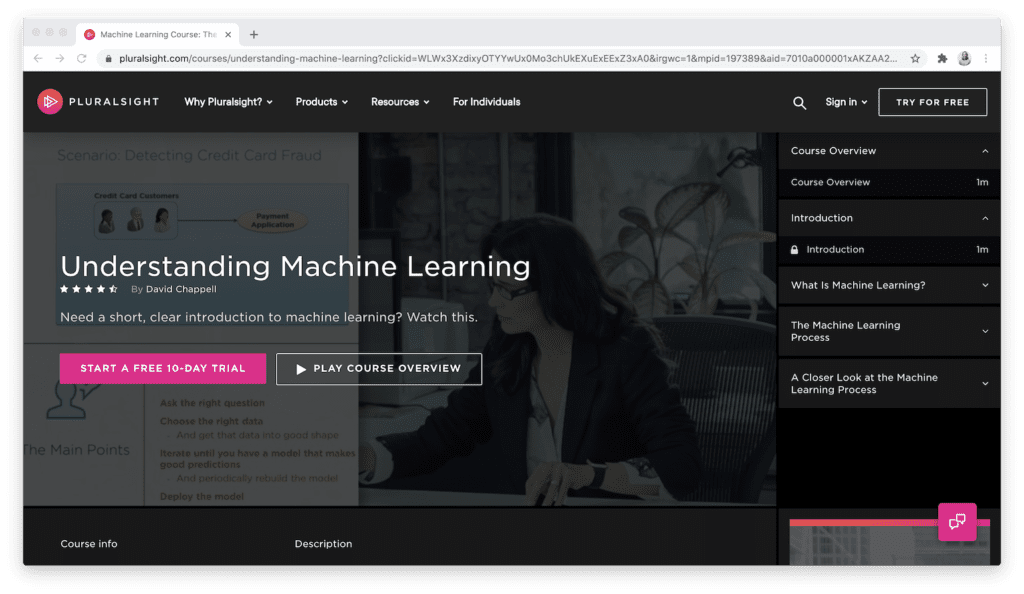All Categories
Featured
Table of Contents
- – Not known Factual Statements About From Softwa...
- – About Aws Certified Machine Learning Engineer ...
- – The Definitive Guide for Machine Learning Is ...
- – The 2-Minute Rule for Training For Ai Engineers
- – The Main Principles Of What Is The Best Rout...
- – A Biased View of Aws Machine Learning Engine...
- – See This Report on Fundamentals Of Machine L...
Some individuals assume that that's cheating. Well, that's my whole occupation. If someone else did it, I'm mosting likely to use what that person did. The lesson is putting that aside. I'm compeling myself to believe through the feasible solutions. It's more about taking in the content and trying to use those ideas and much less concerning finding a library that does the work or searching for somebody else that coded it.
Dig a little bit deeper in the mathematics at the beginning, just so I can develop that structure. Santiago: Lastly, lesson number seven. I do not believe that you have to recognize the nuts and screws of every formula before you use it.
I have actually been using neural networks for the longest time. I do have a sense of just how the slope descent functions. I can not explain it to you now. I would have to go and inspect back to really obtain a much better intuition. That doesn't mean that I can not fix things using neural networks, right? (29:05) Santiago: Attempting to force individuals to think "Well, you're not mosting likely to be successful unless you can explain every single detail of exactly how this works." It returns to our arranging example I think that's just bullshit suggestions.
As a designer, I have actually dealt with several, several systems and I have actually used numerous, lots of points that I do not understand the nuts and screws of exactly how it works, despite the fact that I understand the influence that they have. That's the last lesson on that particular thread. Alexey: The funny thing is when I think concerning all these collections like Scikit-Learn the formulas they utilize inside to implement, for instance, logistic regression or something else, are not the like the formulas we study in artificial intelligence classes.
Not known Factual Statements About From Software Engineering To Machine Learning
Even if we tried to learn to get all these basics of machine discovering, at the end, the algorithms that these libraries make use of are various. Santiago: Yeah, definitely. I think we need a great deal much more materialism in the market.

By the means, there are 2 different courses. I generally speak to those that desire to operate in the market that wish to have their effect there. There is a course for researchers and that is completely different. I do not attempt to discuss that because I do not recognize.
Right there outside, in the industry, pragmatism goes a lengthy way for sure. (32:13) Alexey: We had a remark that claimed "Feels even more like inspirational speech than chatting concerning transitioning." Possibly we ought to change. (32:40) Santiago: There you go, yeah. (32:48) Alexey: It is an excellent inspirational speech.
About Aws Certified Machine Learning Engineer – Associate
One of the points I desired to ask you. First, allow's cover a couple of things. Alexey: Allow's start with core tools and frameworks that you require to discover to really change.
I understand Java. I understand exactly how to use Git. Maybe I recognize Docker.
What are the core devices and frameworks that I require to discover to do this? (33:10) Santiago: Yeah, absolutely. Fantastic inquiry. I assume, leading, you ought to begin discovering a little bit of Python. Considering that you currently know Java, I do not think it's going to be a huge transition for you.
Not due to the fact that Python is the very same as Java, however in a week, you're gon na obtain a great deal of the distinctions there. Santiago: Then you obtain certain core devices that are going to be made use of throughout your whole job.
The Definitive Guide for Machine Learning Is Still Too Hard For Software Engineers
That's a library on Pandas for information adjustment. And Matplotlib and Seaborn and Plotly. Those 3, or one of those 3, for charting and showing graphics. You get SciKit Learn for the collection of maker learning algorithms. Those are tools that you're mosting likely to need to be making use of. I do not advise just going and learning more about them unexpectedly.
Take one of those training courses that are going to begin presenting you to some problems and to some core ideas of device discovering. I do not remember the name, yet if you go to Kaggle, they have tutorials there for complimentary.
What's good about it is that the only need for you is to understand Python. They're mosting likely to offer a trouble and inform you just how to utilize choice trees to solve that particular issue. I believe that process is very effective, because you go from no maker learning history, to recognizing what the problem is and why you can not fix it with what you understand now, which is straight software program engineering methods.
The 2-Minute Rule for Training For Ai Engineers
On the various other hand, ML engineers specialize in building and releasing artificial intelligence designs. They concentrate on training models with information to make predictions or automate tasks. While there is overlap, AI engineers deal with even more varied AI applications, while ML engineers have a narrower focus on maker learning formulas and their practical application.

Machine discovering designers concentrate on establishing and deploying equipment knowing versions right into production systems. On the other hand, information researchers have a broader function that includes data collection, cleaning, exploration, and structure models.
As organizations increasingly take on AI and machine learning modern technologies, the demand for proficient professionals grows. Equipment learning engineers function on advanced projects, contribute to technology, and have competitive salaries.
ML is essentially various from typical software advancement as it concentrates on training computer systems to discover from information, instead than programming explicit guidelines that are performed systematically. Uncertainty of end results: You are most likely utilized to composing code with foreseeable outcomes, whether your feature runs once or a thousand times. In ML, however, the end results are less specific.

Pre-training and fine-tuning: How these versions are trained on huge datasets and afterwards fine-tuned for details jobs. Applications of LLMs: Such as message generation, belief analysis and info search and retrieval. Papers like "Interest is All You Need" by Vaswani et al., which introduced transformers. On the internet tutorials and programs focusing on NLP and transformers, such as the Hugging Face training course on transformers.
The Main Principles Of What Is The Best Route Of Becoming An Ai Engineer?
The capacity to take care of codebases, combine modifications, and fix problems is equally as vital in ML growth as it is in traditional software application jobs. The skills created in debugging and screening software application applications are extremely transferable. While the context might alter from debugging application reasoning to recognizing concerns in data handling or model training the underlying concepts of organized examination, hypothesis testing, and iterative refinement coincide.
Equipment knowing, at its core, is heavily dependent on data and probability concept. These are important for comprehending how formulas gain from data, make forecasts, and review their efficiency. You ought to consider becoming comfy with concepts like analytical significance, circulations, theory screening, and Bayesian reasoning in order to design and translate versions properly.
For those thinking about LLMs, a detailed understanding of deep understanding designs is useful. This consists of not only the auto mechanics of semantic networks yet also the style of particular models for different usage instances, like CNNs (Convolutional Neural Networks) for picture handling and RNNs (Frequent Neural Networks) and transformers for sequential information and all-natural language handling.
You must recognize these concerns and find out techniques for identifying, reducing, and communicating about predisposition in ML models. This consists of the potential effect of automated decisions and the ethical implications. Lots of models, especially LLMs, call for significant computational sources that are usually offered by cloud systems like AWS, Google Cloud, and Azure.
Structure these skills will certainly not only assist in a successful transition into ML but additionally make certain that programmers can contribute properly and properly to the innovation of this vibrant field. Theory is crucial, but absolutely nothing defeats hands-on experience. Begin servicing projects that enable you to use what you've learned in a functional context.
Construct your projects: Beginning with straightforward applications, such as a chatbot or a message summarization device, and slowly raise complexity. The field of ML and LLMs is swiftly progressing, with new developments and modern technologies arising regularly.
A Biased View of Aws Machine Learning Engineer Nanodegree
Join areas and forums, such as Reddit's r/MachineLearning or area Slack channels, to go over concepts and obtain recommendations. Participate in workshops, meetups, and meetings to get in touch with other professionals in the area. Contribute to open-source tasks or write article regarding your understanding trip and jobs. As you acquire experience, begin looking for possibilities to integrate ML and LLMs right into your job, or look for new functions concentrated on these technologies.

Possible usage instances in interactive software, such as recommendation systems and automated decision-making. Recognizing unpredictability, fundamental analytical measures, and likelihood circulations. Vectors, matrices, and their role in ML formulas. Error minimization techniques and gradient descent described merely. Terms like design, dataset, features, labels, training, inference, and validation. Information collection, preprocessing strategies, design training, assessment procedures, and release considerations.
Decision Trees and Random Forests: Instinctive and interpretable models. Matching issue types with suitable models. Feedforward Networks, Convolutional Neural Networks (CNNs), Recurrent Neural Networks (RNNs).
Continuous Integration/Continuous Deployment (CI/CD) for ML process. Version surveillance, versioning, and efficiency tracking. Spotting and addressing changes in design performance over time.
See This Report on Fundamentals Of Machine Learning For Software Engineers

Course OverviewMachine understanding is the future for the future generation of software application professionals. This course works as an overview to equipment understanding for software application designers. You'll be introduced to 3 of the most pertinent components of the AI/ML self-control; overseen learning, semantic networks, and deep discovering. You'll realize the differences between conventional programming and artificial intelligence by hands-on advancement in supervised learning prior to developing out intricate dispersed applications with semantic networks.
This training course offers as an overview to maker lear ... Program More.
Table of Contents
- – Not known Factual Statements About From Softwa...
- – About Aws Certified Machine Learning Engineer ...
- – The Definitive Guide for Machine Learning Is ...
- – The 2-Minute Rule for Training For Ai Engineers
- – The Main Principles Of What Is The Best Rout...
- – A Biased View of Aws Machine Learning Engine...
- – See This Report on Fundamentals Of Machine L...
Latest Posts
Sql Interview Questions Every Data Engineer Should Know
Mastering The Software Engineering Interview – Tips From Faang Recruiters
How To Prepare For A Software Engineering Whiteboard Interview
More
Latest Posts
Sql Interview Questions Every Data Engineer Should Know
Mastering The Software Engineering Interview – Tips From Faang Recruiters
How To Prepare For A Software Engineering Whiteboard Interview